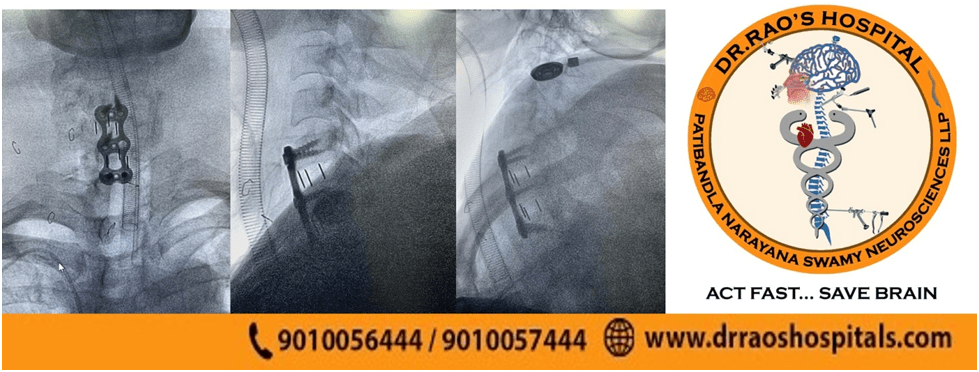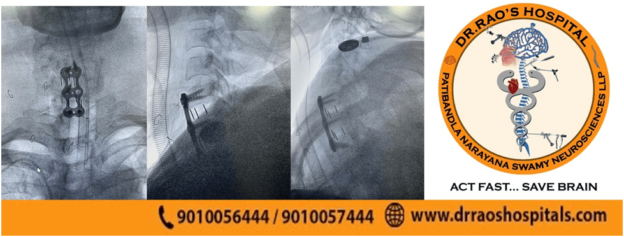The best Spine Surgery Relief from Spinal Radiculopathy?
Spinal radiculopathy is a condition that affects the nerves in the spinal column. Spinal radiculopathy is a long-term condition that can cause pain, numbness, and weakness in the arms and legs. Irritation of neck spinal roots is called cervical radiculopathy, and those in the low back are called lumbar radiculopathy. The most commonly affected areas in the low back are L4-5 and L5-S1, and in the neck are C5-6 and C6-7. Dr. Rao’s hospital is the one of the best center for the spinal radiculopathy treatment.
A. Causes of spinal radiculopathy: Sitting and a sedentary lifestyle are risk factors. Other factors include Male gender, chronic cough, Pregnancy, Routine heavy lifting, and Smoking.
1. Trauma to the spine
2. Disease of the spine – Bone spurs, degenerative disc, tumors
3. Injuries to the nerves in the spine
B. Symptoms of spinal radiculopathy: Symptoms depend on the location of the compression.
1. Pain in the arm or leg or headache, sharp and shooting.
2. Numbness in the arm or leg
3. Weakness in the arm or leg – dropping of objects, slippage of slippers
C. Diagnosis of spinal radiculopathy
1. History and Physical exam: specific dermatome and myotome involvement.
2. X-rays – bony spurs, loss of curvature.
3. MRI – disc degeneration, annular tear, nerve root compression, and neural foramen narrowing.
D. Treatment of spinal radiculopathy: 8 out of 10 people with pain will improve without surgery.
1.Pain medication: Anti-inflammatory medications
2.Immobilization – cervical collar
3.Physical therapy – Neck strengthening exercises following the acute phase
4.Surgery:
- Discectomy for the herniated disc if the pain lasts longer than six weeks of conservative management.
- Discectomy with fusion – The fusion helps stabilization of the spinal column.
- Disc replacement is a relatively new and less commonly used surgery. The advantage over fusion is the preservation of motion.
- Posterior cervical laminoforaminotomy is indicated if the disc is outside the vertebral body.
E. Precautions following surgery:
1.Avoid activities that require excessive pressure or bending.
2.Avoid twisting
3.Avoid lifting heavy things
4.Avoid pushing or pulling things in any way
5.Avoid standing or sitting for more time
6.Avoid lifting anything above your head if you have spinal fusion
7.Avoid prolonged walking for the first two weeks
8.Avoid straining your body; you can go up or down the stairs once or twice a day.
F. Follow-up for spinal radiculopathy
1. Return to activity – Generally in 3 to 6 weeks.
2. Resuming activity – Generally in 3 to 6 weeks
3. Long-term care – MRI to check the progress, CT scan to check the fusion
Conclusion
Spinal radiculopathy is a condition that affects the nerves in the spinal column. Spinal radiculopathy is a long-term condition that can cause pain, numbness, and weakness in the arms and legs. Visit the spine surgery center in Guntur if you experience these symptoms. If you’re searching for high-quality spine surgery in Guntur, Dr. Rao’s hospital is the perfect place for you! Our experienced best neurosurgeon in India, Dr. Mohana Rao Patibandla, can help relieve your pain and get you back to your life.


